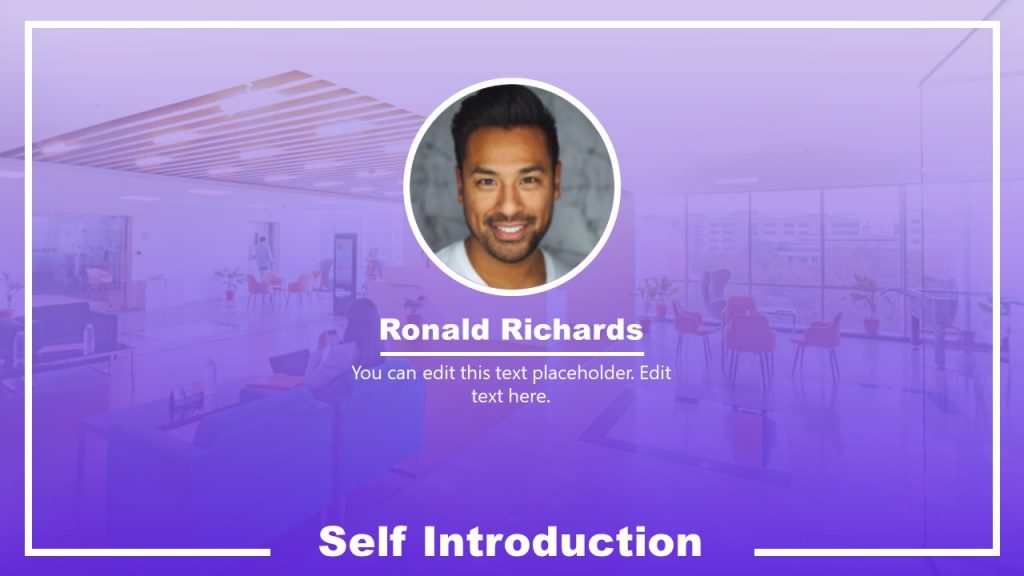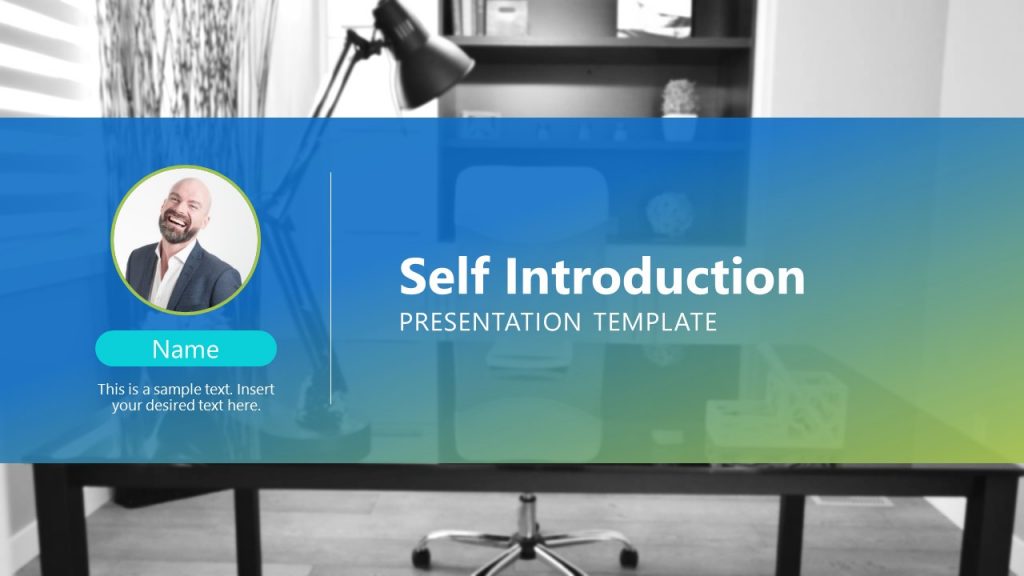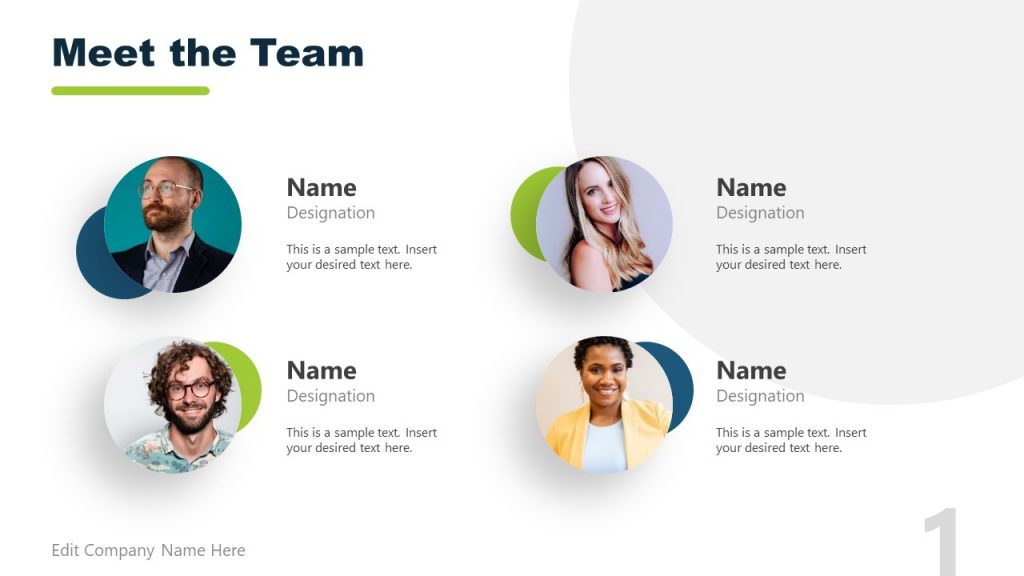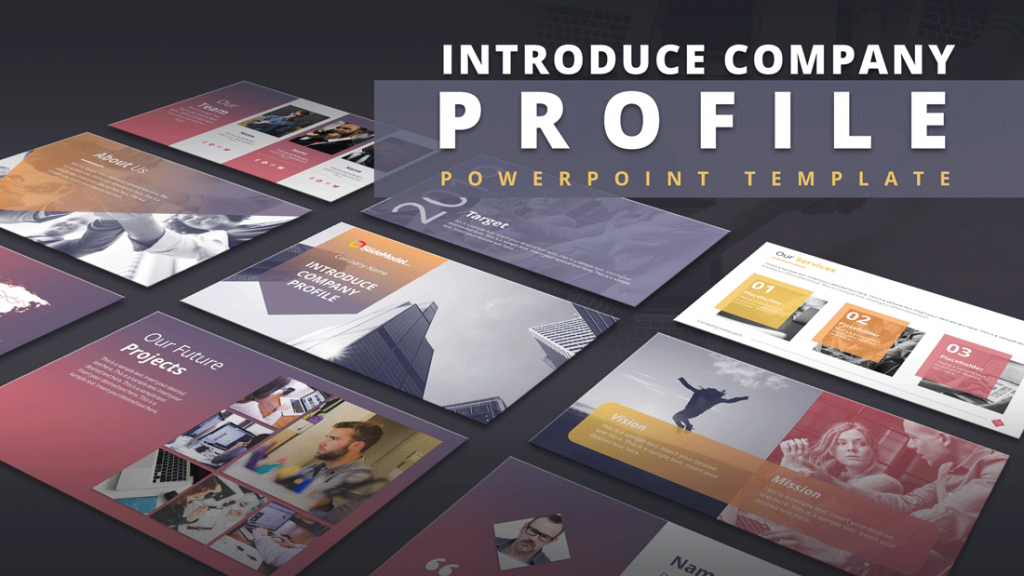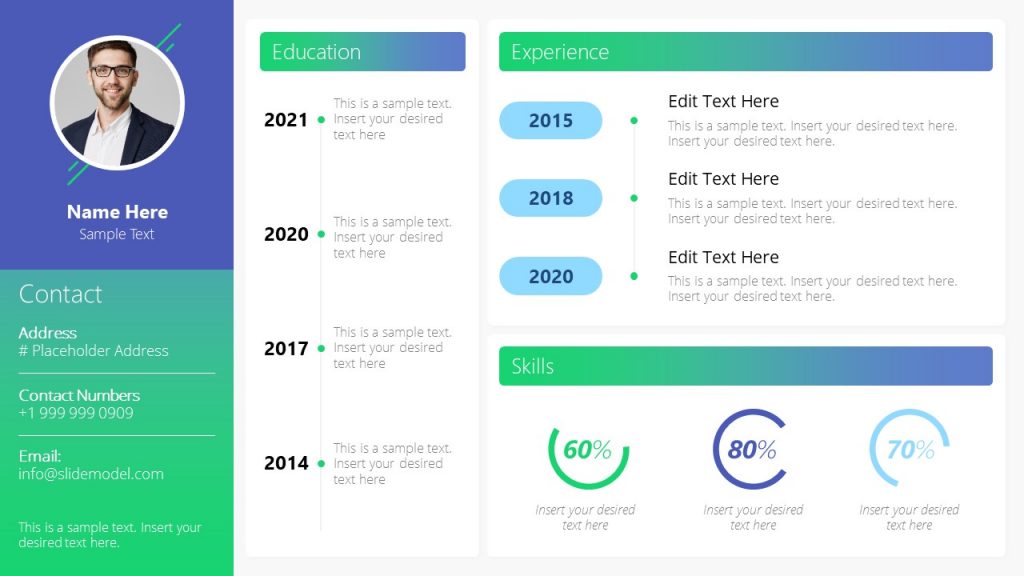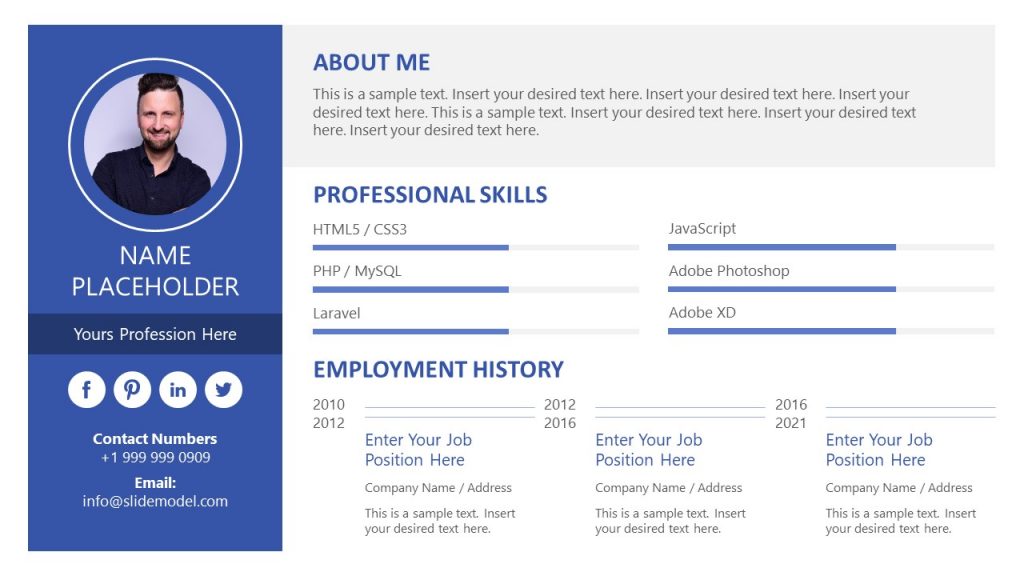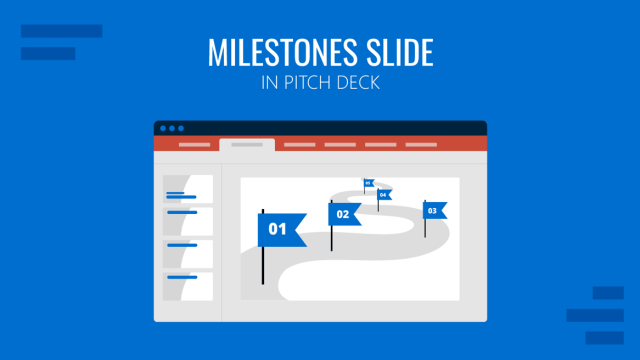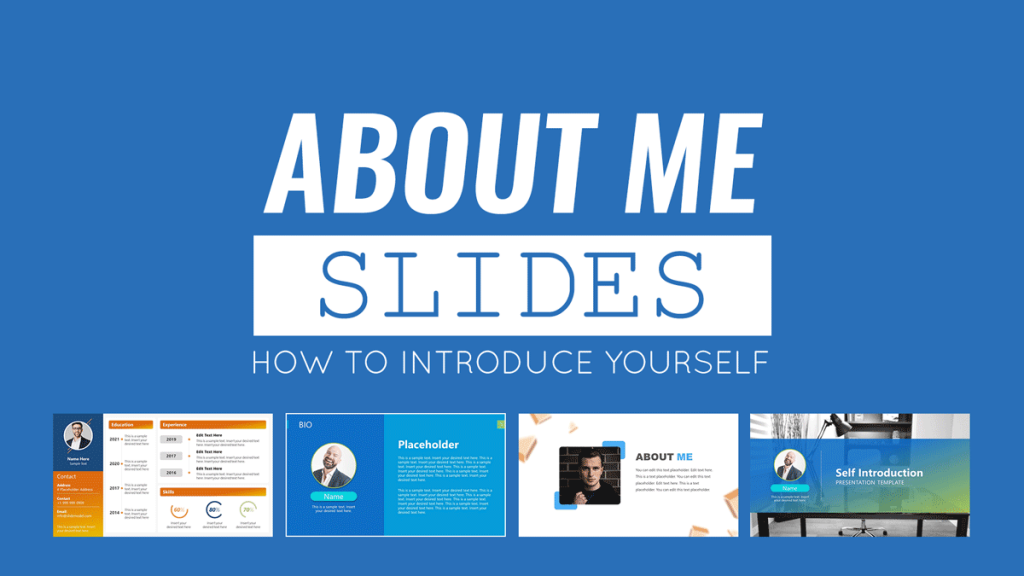
From conference talks to client demos, it’s always essential to include an About Me slide in any presentation you are giving. Introducing yourself early into the presentation helps build a better rapport with the audience.
You can start with several fun facts about me slide to break the ice or go for a more formal professional bio to explain your background and what makes you qualified to talk about the topic at hand. At any rate, your goal is to get the audience on your side by revealing some of your personality.
How to Introduce Yourself in a Presentation: 4 Approaches
It’s a good practice to include self-introduction slides at the beginning of your presentation. If you are looking to answer how to introduce yourself professionally, typically somewhere after the title, opening slide, and the main agenda. However, the presentation structure will be somewhat different depending on whether you are presenting to a new audience or a group of people familiar with (e.g., your team, clients, or business partners).
Here are four about me slide ideas you can try out, plus an About me template you can use to present yourself in a presentation.
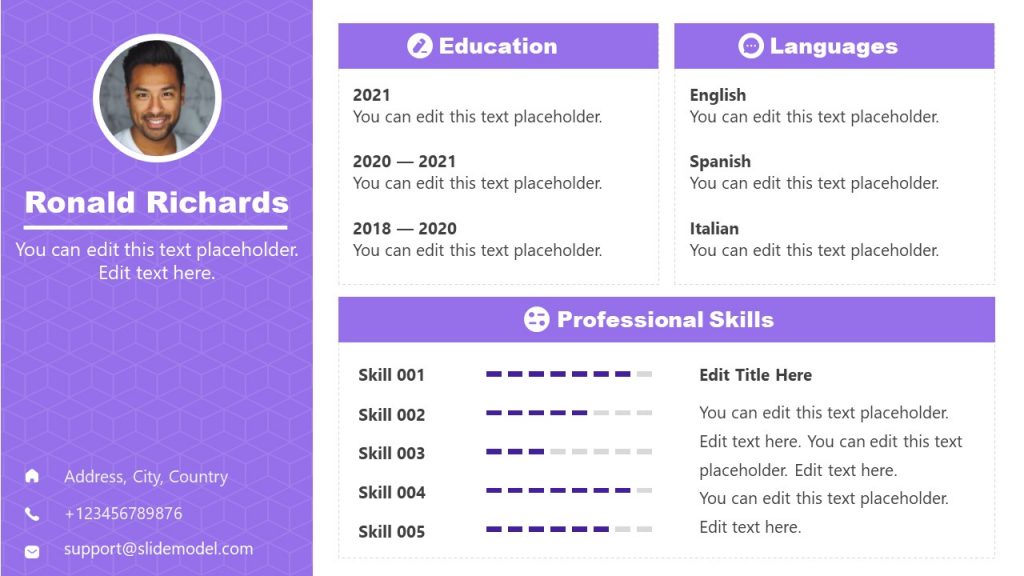
1. Mention Your Name and Affiliations
Start the presentation with the introduction basics. State your name, company, title/position, and several quick facts about who you are and what you do. Even if you present to a familiar audience, a brief recap is always welcome.
To keep things a bit more engaging, consider adding some lesser-known facts about yourself. For example:
- Your interests
- Recent accomplishments
- Hobby/Side-hustle projects
- Testimonial/quote from a team member
- Fun nicknames you got
The above can be nice ice breakers for less formal team presentations, project updates, or catch-ups with clients. Also, if you’re looking for your first job experience, it’s a good opportunity to introduce your non-client-based portfolio in a friendlier format.
Here are several unique About Me examples you can try out:
For a client case study presentation:
“Hi, I’m Lynda, Chief Customer Success Specialist with Acme Corp.
(Also, someone you thought was a chatbot for the first few encounters)
47 NPS | 15% Churn Rate | 40% repeat purchase rate”
For a team after-action review presentation:
Mike, Project Manager at Cool Project
(aka Maximizer)
Personal Project stats:
387 Slack messages answered
56 cups of coffee consumed
Project profit gross margin: $1.2 million
2. Work On Your Elevator Pitch
One of the best ways to introduce yourself in a presentation is to share a punchy elevator pitch. This works extra well if you are presenting to a new audience.
An elevator pitch is a concise statement (1-2 sentences) that summarizes your unique strengths, skills, and abilities and explains how these can benefit your listener.
It’s nice to have one ready for your presentations and networking in general since it helps you immediately connect with new people and communicate your value.
Writing a solid elevator pitch may require several attempts and iterations. But the sooner you start, the faster you’ll arrive at the best formula!
To get your creative juices flowing, here are several elevator pitch ideas you can incorporate in an introduction slide about yourself.
For professionals:
“Certified Salesforce Administrator, data visualization specialist, and analytics for top SaaS brands. I help businesses make more sense of their data to drive better outcomes”.
For a mentor:
“Adjunct professor of creative writing at Columbia University, published author, former lifestyle editor at Esquire, the New York Times. I can teach you how to find, shape, pitch, and publish stories for web & print.”
For a student:
“Third-year Marine Biology student at Denver State Uni. Volunteer at Lake Life Protection NGO, climate change activist, looking to expand my research about water conservation”.
3. Answer Popular Questions or Assumptions
If you are a frequent presenter, chances are you get asked a lot of the same “About Me questions” after your speeches and during the networking bits. So why not address a roaster of these in your About Me slide? Select 4-5 most common questions and list them as quick FAQs on your slide deck.
4. Focus on Telling a Story
Strong introductions are personable. They are meant to offer a sneak-peak into your personality and the passion behind your work. That’s why for less formal presentations, you can (and should!) start with a short personal story.
Remember: reliability is important to “click” with your audience.
Recommended lecture: Storytelling for Presentations
For instance, neuroscience research of political ads recently found that ads featuring real people performed better than those with genetic stock footage. Among viewers, emotional engagement and memory encoding (recall) increased dramatically when political ads showed relatable people.
The same holds true for commerce. In 2015, GE launched a viral “What’s the Matter With Owen?” video ad series to attract more young talent to the company. The clips featured a relatable protagonist, struggling to explain what his work at GE entails e.g. that the company isn’t building railroads, but actually does some very innovative pilots. Many engineers related to the promo and work applications to GE shoot up by 800%!
As the above examples show, a good relatable story can go a long way. So think about how you can make a PowerPoint presentation about yourself more representative of who you really are as a person.
How to Give a Presentation About Yourself: 4 Fool-Proof Tips
On other occasions, you may be asked to give a full-length “about me” presentation. Typically, this is the case during a second interview, onboarding, or if you are in attending a training program or workshop presentation where everyone needs to present themselves and their work.
Obviously, you’ll need more than one good about me slide in this case. So here’s how to prepare a superb presentation about me.
What to Put in a Presentation About Yourself?
The audience will expect to learn a mix of personal and professional facts about you. Thus, it’s a good idea to include the following information:
- Your name, contact info, website, social media handles, digital portfolio.
- Short bio or some interesting snippets.
- Career timeline (if applicable).
- Main achievements (preferably quantifiable).
- Education, special training.
- Digital badging awards, accolades, and other types of recognition.
- Something more personal: an interest, hobby, aspiration.
The above mix of items will change a bit, depending on whether you are giving an interview presentation about yourself or introduce yourself post-hiring. For example, in some cases a dedicated bio slide may be useful, but other times focusing on main achievements and goals can be better.
That being said, let’s take a closer look at how to organize the above information in a memorable presentation.
P.S. Grab an about me slide template to make the design process easier!

1. Create a List of “Facts About Me”
The easiest way to answer the “tell me about yourself” question is by having an array of facts you can easily fetch from your brain as a self introduction.
When it comes to a full-length about me presentation, it’s best to have a longer list ready. To keep your brainstorming process productive, organize all your ideas in the following buckets:
- Key skills (soft and hard)
- Educational accolades, training
- Accomplishments and other “bragging rights”
- Personal tidbits (a.k.a. fun facts)
Once you have a list, it gets easier to build a series of slides around it.
2. Think Like Your Audience
Most likely you’d be asked to make a presentation about yourself by a recruiter. There’s a good reason why many ask this — they want to determine if you are a good “cultural fit” for their organization.
After all, 33% of people quit within the first 3 months of accepting a new job. Among these:
- 43% of employees quit because their day-to-day role was different than what they were told it would be during the hiring process.
- 32% cite company culture as a factor for leaving within the first three months.
About me presentations often serve as an extra “filter” helping both parties ensure that they are on the same page expectations- and work style-wise. Thus, when you prepare your self presentation, do some background company research. Then try to align the presentation with it by matching the company tone, communication style, and cultural values.
3. Include Testimonials and Recommendations
Don’t get lost in the loop thought of “how to present myself”. Use the voice of others to back up the claims you are making in your presentation. After all, trumping your own horn is what you are expected to do in such a presentation. But the voices of others can strengthen the claims you are personally making.
Depending on your role and industry, try to sprinkle some of the following testimonials:
- LinkedIn recommendations
- Quotes from personal or professional references
- Social media comments
- Data metrics of your performance
- Funny assessments from your colleagues/friends
The above not just strengthen your narrative, but also help the audience learn some extras about you and your background. Testimonial slides can be of help for this purpose.
NB.: If you have worked, and monetized, any product/service, it may be a good chance to present data from platforms like TrustPilot, as they are unbiased sources that can speak about your work ethics. That being said, only introduce that information if the industries are somehow linked (but not in direct competition), or to back up your professional profile.
4. Include a Case Study
One of the best ways to illustrate who you are is to show what you are best in. Remember, an about me presentation often needs to “soft sell” your qualifications, experience, and personality.
One of the best ways to do that is to showcase how you can feel in a specific need and solve issues the business is facing.
So if you have the timeframe, use some of the ending slides to deliver a quick case study. You can present:
- Short retrospective of a past successful project
- Before-after transformations you’ve achieved
- Spotlight of the main accomplishments within the previous role
- Main customer results obtained
- Specific solution delivered by you (or the team you’ve worked with)
Ending your presentation on such a high note will leave the audience positively impressed and wondering what results you could achieve for them.
FAQs
What is the purpose of a self introduction slide in a presentation?
A self introduction slide gives your audience context about who you are: your background, expertise, and relevance to the topic. It builds trust and engagement from the start, especially in professional or academic settings.
How do I start a self presentation confidently?
Begin with a clear greeting, your name, and a concise statement of your role or purpose. Keep it relevant to the presentation and audience. Maintain eye contact and use a calm, assertive tone to build credibility.
What should I include on a self introduction slide?
Your name, title or role, a photo (if appropriate), relevant experience, and one interesting fact or personal element. Limit text and prioritize visual clarity for audience engagement.
How do I choose what to say when I present myself in a professional setting?
Focus on professional highlights related to the event. Use a structure: name -> current position -> key achievements -> goal for the session. Keep it under 60 seconds unless otherwise instructed.
How can I make my introduction self presentation more engaging?
Use a clean, branded slide design, add a personal anecdote or short story, and avoid reading directly from your slide. Show personality while staying professional.
How to introduce yourself in a presentation without sounding scripted?
Rehearse the core points but allow natural variation in phrasing. Use bullet points or simple visuals on your slide to guide the flow instead of memorizing paragraphs.
What are common mistakes in a self presentation slide?
Too much text, irrelevant personal details, low-quality photos, lack of structure, and failing to connect the intro with the presentation’s purpose.
How to present yourself in a presentation if you’re nervous?
Focus on preparation. Practice your self presentation multiple times, ideally in front of someone. Deep breathing, pausing between phrases, and starting with simple facts (like your name and role) can help reduce anxiety.
What tone should I use in a self introduction during a presentation?
Use a tone that matches the context: formal for academic or business settings, conversational for informal or team-based events. Avoid monotony; use inflection to show interest.
How to introduce yourself during a presentation if you’re switching careers?
Acknowledge your past career briefly, highlight transferable skills, and explain your interest or motivation for the new field. Frame it as a journey, not a detour.
How to introduce yourself in a presentation if you’re a student?
State your name, academic level, field of study, and any key projects, internships, or goals related to the presentation. You can also briefly mention your career aspirations.
How do I present myself effectively without sounding like I’m bragging?
Focus on facts and impacts rather than adjectives. Instead of saying “I’m amazing at marketing,” say, “I led a campaign that increased engagement by 40%.” Let the results speak.
How to present yourself in a presentation when your role is complex or multidisciplinary?
Break it down: “I’m a [primary role] who also works in [secondary expertise]. My background combines [skill A] and [skill B], which I apply to [presentation goal].” Clarity is more important than full detail.
To Conclude
It’s easy to feel stumped when you are asked to talk about yourself. Because there are so many things you could mention (but not necessarily should). At the same time, you don’t want to make your introduction sound like a bragging context. So always think from the position of your audience. Do the facts you choose to share benefit them in any way? If yes, place them confidently on your About Me slides!
